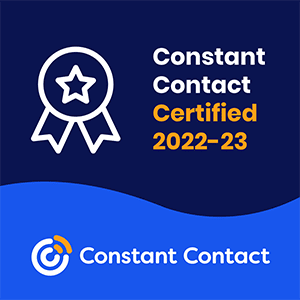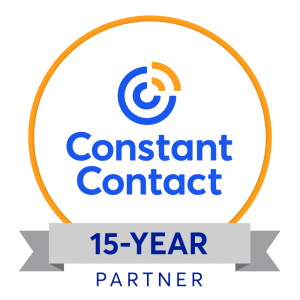And you thought it was just a summer thing. Google has finally made it official: Content marketing is now its number one ranking factor.
If your company has dragged its feet on making content marketing the hub around which all its other marketing efforts revolve, you need to do an abrupt about-face. This content marketing ranking factor is the one thing that can make or break your online success.
Call it your North Star.
Related: Want to Rank #1? 6 Tips to Create SEO-Friendly Content
Google’s Search Engine Optimization (SEO) Starter Guide puts it this way, “Creating compelling and useful content will likely influence your website more than any of the other factors discussed here.” The guide cites “blog posts, social media services, email…[and] forums” as examples of the type of content you need to rank atop search results.
In other words, content marketing. Now more than ever, it’s time to embrace this ROI-generating marketing tactic.
With 6 times the conversion rate of companies that don’t use it and at 62% less cost, content marketing won’t only rocket your company to a higher spot on your prospects’ searches. It could also catapult your ROI to new heights.

Learn how to publish top-quality content consistently, organize and design your website so your audience has the experience to write home about, and earn backlinks that give your content even more clout.
Quick Takeaways
- Learn how critical top-quality content is to your overall search rankings.
- Discover how to optimize your content for Google searches.
- Uncover the secrets to successful content.
- Start publishing world-class content consistently.
Related: The 11 Commandments of Online Marketing

Realize the Importance of Quality Content Marketing as a Ranking Factor

Why do you think Google has made quality content its number-one ranking factor? Look at the reason Google is in business.
Google’s success rests on one thing: its users finding the information they need to quench their thirst for knowledge and solve their problems. Users find that information in published content, whether in blog posts, forums, videos, social media conversations, email newsletters, or other forms of digital communication.
The better the content, the more satisfied Google’s users will be. Google’s entire business model rests on the quality of the content people post online. Creating world-class content, then, must be your company’s number one marketing priority.
But, no matter how good your content is, it won’t connect with your target audience if they can’t find you. That’s why it’s critical that you optimize your content for your target market’s searches.
Optimize Your Content for SEO
Gone are the days where you could just load up your content with keywords and call it a day. Google found out years ago that keyword-stuffed content made for an awkward read. Not the stellar user experience they wanted to deliver to their users.
Focus on your target customer, and you’ll likely catch search engines’ attention as well.
Conduct Audience Research
- Get to know your audience and their needs: If you haven’t yet created buyer personas, do so now. It will give you a glimpse of your target audience’s tastes, likes, the kinds of problems that keep them up at night, and even the phrasing they’ll likely use when they search for something.
- Brainstorm topics that address their interests: Look for solutions within your niche that can solve their problems or satisfy their curiosity. Plan your content around those topics.
Do Keyword Research
Once you have a general idea of what kinds of content will meet your audience’s needs, you need to narrow down your topics.
Keyword research isn’t only about figuring out what words should be in your content to attract search engines’ virtual eyeballs. It can also help guide your creative process by generating ideas.
First, ask yourself some questions.
What questions does your target audience ask when they search for your products and services? What words do they use when they search?
For example, if your typical customers are heavy smartphone users, they’ll use voice search. Natural language searches are usually in question form, like “Alexa, what kinds of cameras are best for nature shots?”
On the other hand, if your customers are usually at work in front of a laptop or desktop computer when they’re searching, they’d be more apt to type in a more traditional search, such as “accounting software for small businesses.”
Once you have a list of the keywords your audience is likely to use when they search for businesses like yours, enter them in Google’s search bar, and a list of related search terms will pop up. These terms can help you pin down topics that will interest your prospects.
Google’s Keyword Planner can also help you generate topic ideas and guide the structure of your content. Using phrases that relate to the main topic in your titles and subheaders can serve as an outline of sorts as you write. Such headings also help guide your readers as they skim through your article.
If your budget can stretch some, invest in one or more paid keyword research tools. Here are some of my favorites:
This keyword research giant can help you perform on-page SEO, audit your current content, generate ideas for improvement, and analyze your competitors’ keyword usage and performance. If local searches are critical to your success, Semrush can help you optimize your content for local search.
Finding keywords that you can easily rank for can open up new vistas when planning content. This tool helps you discover long-tail, more detailed keyphrases related to your products and services that will help you create innovative content and get you to the top of Google searches.
Ahrefs helps you optimize your content with a site audit, explore what your prospects are searching for online, and research the keywords the top-performing publishers in your industry use in their content. This tool also offers tutorial videos, how-to articles, and other learning opportunities that can help you maximize the value you get from your purchase. For that reason, it is the perfect solution for small businesses that don’t have the budget for an in-house SEO team.
Related: How Your Small Business Can Take Down Goliath

Finally, Start Creating Top-Quality Content

Now that you have a blueprint for where you want to go, it’s time to create content that will delight your audience and attract search engines.
Use Google’s Content Quality Guidelines
Google has two main guidelines it uses to evaluate your content’s quality.
- Expertise, Authoritativeness, and Trustworthiness (EAT): Google expects its top-ranking content to demonstrate that the content comes from a wealth of expertise, positions the content creator as an authority in their field, and serves as a trustworthy source of information. Such content provides users with the information they can trust and put to use.
- Your Money or Your Life (YMYL): Your audience, like people everywhere, places a higher value on content that can help them make (or save) more money, increase their physical and mental health, and infuse happiness in their lives. For that reason, Google uses these criteria to rank content – so keep that in mind as you create.
Using these factors to plan, create, and publish content, along with your focus keywords, will help your content rank higher in your target audience’s Google searches. As a result, they’ll be able to find your content and recommend it to their friends and colleagues.
If your content meets these criteria, other industry leaders might even cite your work in their own blog posts and other publications, earning you valuable backlinks with every mention.
Related: How to Build Backlinks – 5 Quality Tips
Follow Content Creation Best Practices
No matter how helpful your topic might be to your target customers, they won’t read your blog posts to the end, if the content is boring, hard to read, or contains glaring errors in grammar or fact.
There’s No Substitute for Good Writing
You might be the world’s foremost expert in your field, but if you can’t write a clever turn of phrase to save your soul, consider turning the writing process over to a team of professional writers. Create a rough draft of what you want to say, provide them with any original research or links to trusted industry sources of data that support your claims, and let the writing pros do the heavy lifting.
Professional writers can turn even the most yawn-worthy copy into a compelling story – one your prospects and customers will read to the very end. Even better, they’ll share it with others, building your site traffic with every share.
Make It Approachable
Even though your target audience might be highly educated, they’re busy people. They don’t have time to sift through complex prose and a mountain of words.
Write content at an average reading level that won’t make it a chore to unpack what you’re saying. Avoid the jargon and technical terms – or at least define them in ways even newbies can understand.
Include a Call to Action and a Compelling Meta Description
Don’t forget to create a compelling meta description for your content. Meta descriptions are the text you see along with the links on search results.
Include your focus keyword and a call to action that promises vital information to your readers. Then make sure your content delivers all the goods your meta description promises.
Always end your article with a call to action. People will want to know what to do to solve their problems or learn more about the topic.
Give them what they want by inviting them to engage further – with a link to an ebook in exchange for signing up for your email newsletter, to sign up for a free consultation, or even a link to a purchase page.
Make the next step relevant to their search. For example, if the target audience for your content is at the top of the sales funnel, they likely won’t want to buy your product right away. Draw them into a trusting business relationship by offering them even more value through more detailed content.
However, if they’re ready to buy, by all means, offer them that opportunity.
Related: Blog SEO: 11 Tips to Optimize Your Blog Posts for SEO (like a Pro)
Make It Evergreen
Of course, you’ll need some of your content to reflect current events, holidays, and other time-sensitive issues. However, devote the lion’s share of your time to content that will read as fresh 10 years from now as it does today.
Get a Second Pair of Eyes Before You Hit “Publish”
Grammatical errors and typos can turn a great article into a piece of trash – at least in its readers’ eyes. Always have someone well-versed in the English language (or whatever language you write in) edit your content before you expose the public to it.
Related: Grammar mistakes are devastating. Use Grammarly and never worry about it again.
Design Your Content to Attract and Retain Attention
Today’s web audiences like to skim content before they take a deep dive into it. Use headings, subheadings, bullet points, and numbers to guide their eyes to your main points as they skim.
Include visuals, such as infographics, videos, and images to catch your reader’s eye, provide information, and keep them engaged in your content. Since at least 65% of the population consists of visual learners, using visuals to convey information is a must if you want them to remember what they read.
Be sure to include alt text that includes your focus keyword for extra SEO clout for each image. Alt text also helps visually impaired people who use screen readers understand what each image conveys – opening your audience up to an even more diverse set of people.
Publish Quality Content Consistently for Optimum Results
Multiple studies show that publishing quality content 2 to 4 times a week yields the highest return in both web traffic and conversions. Higher web traffic fuels your search rankings to soar even higher.
Pairing quality with consistency delivers faster, longer-lasting results. But you might not have the resources to publish content that often. After all, you have a business to run.
But there’s a solution. If you are ready to get more traffic to your site with quality content published consistently, check out our Content Builder Service.
Set up a quick consultation, and I’ll send you a free PDF version of my books. Get started today – and generate more traffic and leads for your business.































Leave A Comment
You must be logged in to post a comment.